Concrete Foundations
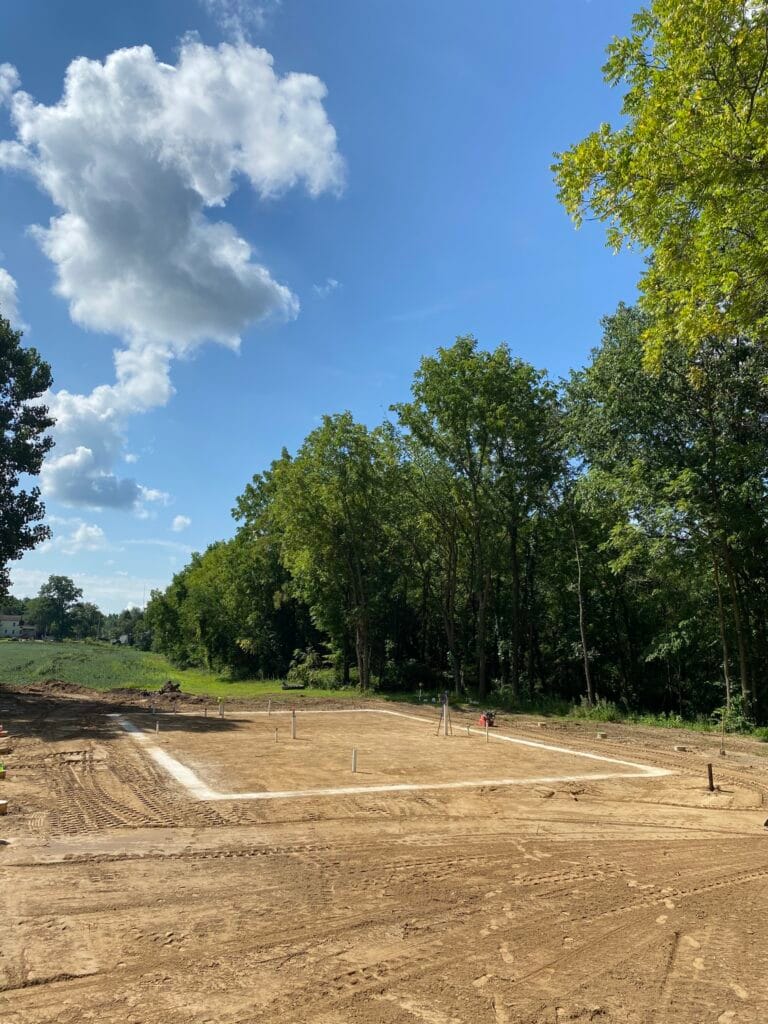
CONCRETE FOOTING FUNDAMENTALS
Footings play a significant role in foundation construction. They are typically constructed of rebar-reinforced concrete, where steel bars are embedded in the concrete to provide additional strength, poured into an excavated trench. Footings are designed to protect the base and prevent settlement, especially in poor soils.
It’s crucial to entrust the design of footings to the experts, who possess the necessary skills to evaluate soil conditions and determine the appropriate depth, width, and positioning. The dimensions of the footings are intricately linked to the size and shape of the structure to be built. Proper placement of the footings is vital for providing the base and the structure with the necessary support.
Concrete footings may also be required for roofs, pergolas, wall retention, or other building forms. By understanding the soil-bearing capacity and following realistic guidelines, you can ensure a solid footing, providing a strong foundation for your construction project.
T-Shaped
Constructing a T-shaped foundation is not just a typical way of underpinning a structure in freezing areas, and it’s a crucial step. The foundation is placed underneath the frost line, with the walls applied to the rim. The wider footing at the base of the foundation provides extra protection, a vital factor in these conditions. The T-shaped base is placed and allowed to heal, the walls are built, and finally, the concrete is poured between the walls, all contributing to the strength and stability of the structure.
In summary:
- T-shaped foundations are used in areas where the ground freezes. (most common and often required in Michigan)
- First, the footing is placed.
- Second, the walls are constructed and poured.
- Lastly, the slab is placed.
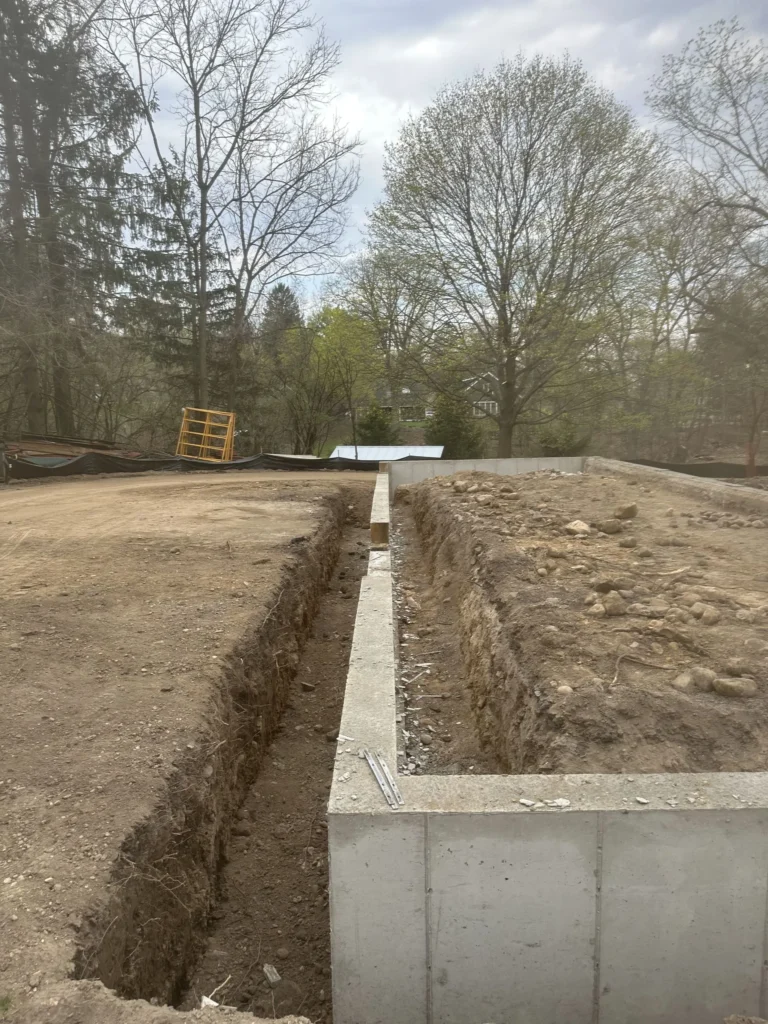
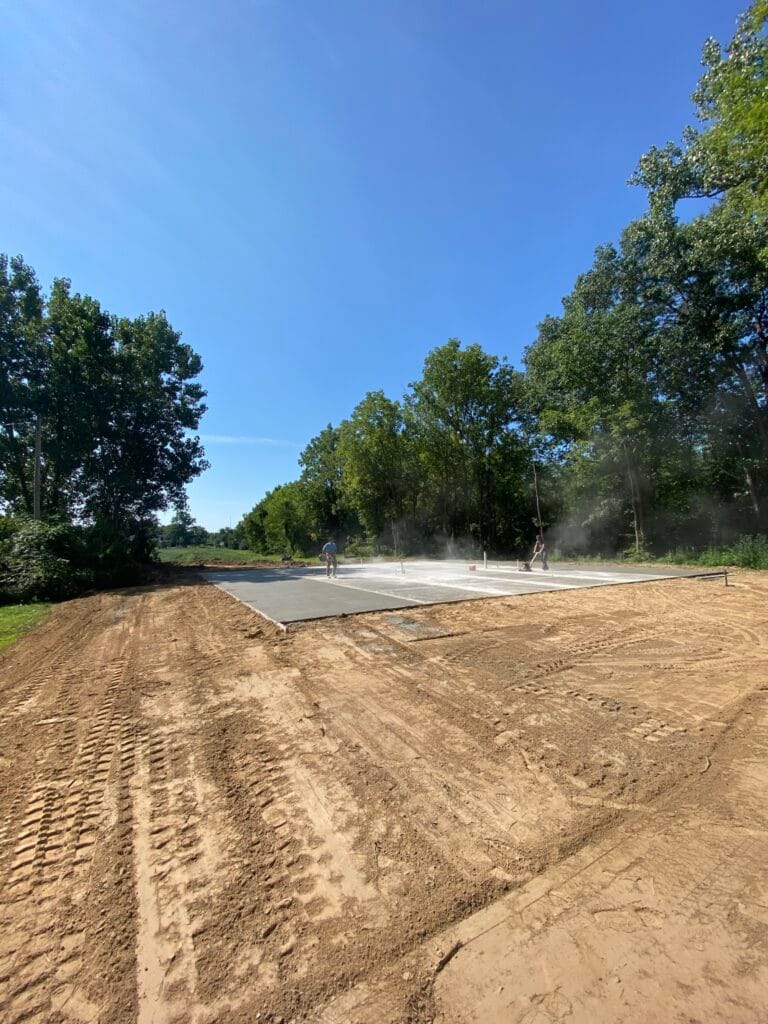
Slab-on-Grade Foundation
A slab-on-grade foundation is a continuous layer of concrete several inches thick and lies directly on the ground. The concrete is poured thicker at the edges to create an integral footing, which provides structural support, and the thickened layer is reinforced by reinforcing rods. The slab usually lies on a crushed gravel bed or sand to enhance drainage, and a loop of wire or wire mesh is cast into the concrete to prevent cracking. This type of foundation is suitable for areas where the ground does not freeze, but it can also be fitted with insulation to prevent damage from frost heaves.
In summary:
- Slab-on-grade is used in areas where the ground does not freeze.
- The edges of the slab-on-grade are thicker than the slab’s interior.
- The slab-on-grade is monolithic (poured all at one time).
- Here in Michigan, a similar method would be used to pour a pole barn floor. The rat walls poured around the edges mimic the method used for integral footings but are not intended for structural support.
Frost Protected
The frost protection method is specifically designed to work in conjunction with a heated system. It utilizes two sheets of solid, polystyrene insulation— one positioned on the exterior of the foundation wall and the other laid flat on a gravel bed at the wall’s base. This setup effectively prevents freezing, a common issue with slab-on-grade foundations in frost-prone areas like Michigan. The insulation traps heat from the structure, preventing heat loss from the slab’s underside and maintaining the ground temperature above freezing at the footings.
In summary:
- It only works with a heated structure.
- Has the benefits of the slab-on-grade method (concrete poured monolithically) in areas subject to frost.
- Here in Michigan, this would be a common method for a pole structure that will be heated. Most commonly, a pole barn is going to be heated. This is also seen in heated floor applications.
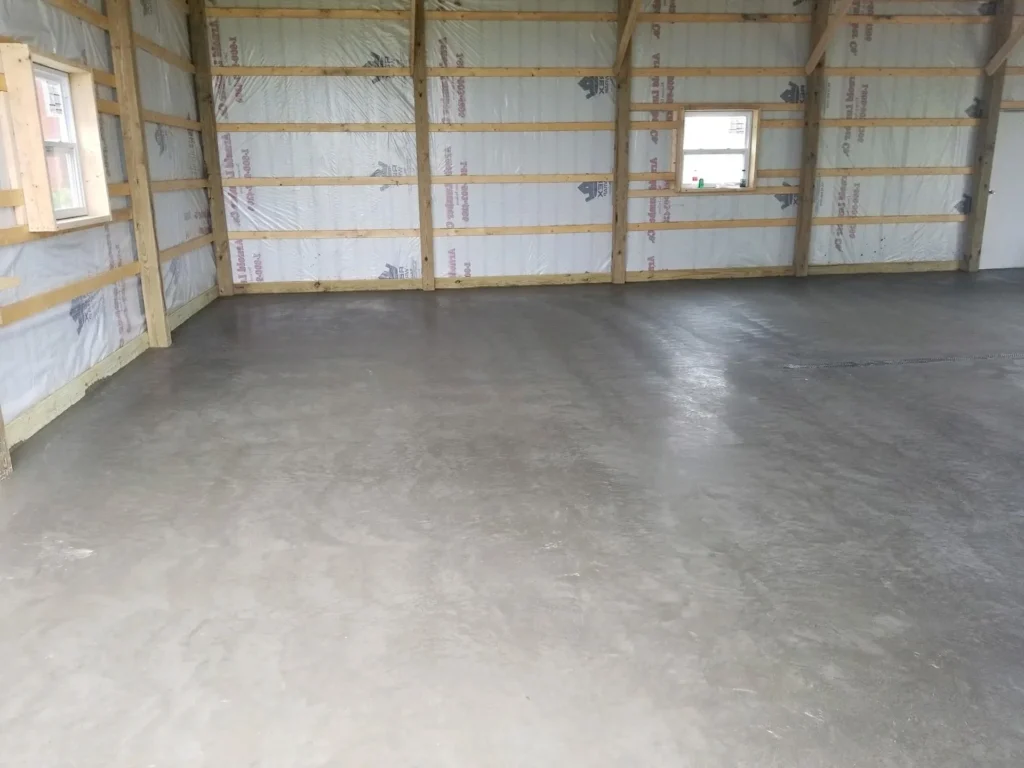
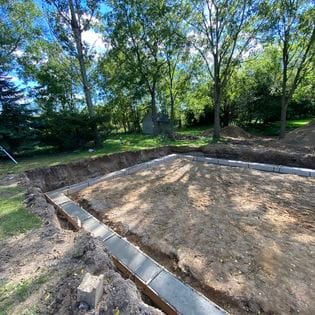
Concrete Footing
In Michigan, any structure built on a poured concrete or block wall must have a footing dug and poured to start. There are variations to how a footing is done depending on the needs of the structure and the ground in which the footing is being dug. Different approaches may be necessary depending on the ground being worked. If you are on a high water table area such as frontage on a lake the approach would need to be modified to accommodate. When a situation arises, the Waltz Concrete team has seen it and knows how to adapt to meet the challenge while meeting the standards set by the local building code.
Home Addition
Slab on grade foundation, two foot walls or crawl space with 4ft walls, the Waltz team can provide the solution for your additions. With poured walls being the method most commonly used, our team can also build block walls if needed or preferred for your application. Waltz concrete can help to complete your project by also pouring the concrete floor, concrete patio and steps. Heated floors, varying thickness, colored concrete, stamped concrete or whatever your project calls for. Small addition or large, on the lake in or your neighborhood, Waltz Concrete has the expertise to give your project the solid foundation it needs.

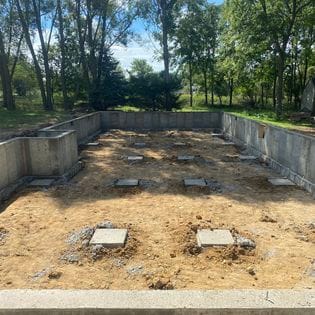
Poured Concrete Wall Foundation
New structural foundations are the backbone of every new building. The criticality of this task cannot be overstated, as it’s not just about building a structure, it’s about building it right. Your role in ensuring that the foundations are done right is of utmost importance in the construction process.
Poured concrete foundations involve constructing and properly securing wall panels on top of the footings. Once the wall panels are in place, all of the necessary hardware to set openings in the wall are put in place (entry doors, garage door openings, windows etc.). Once all the openings are set, the footings can be drilled and rebar set both into the footing and laid in the walls. The walls are then filled in one continuous pour, and the concrete is poured into the forms. This concrete then undergoes a process called ‘curing ‘, where it is left to harden on site. The rebar, installed in the footing, limits weak points and joints.
Poured concrete wall foundations are arguably stronger than cinder blocks. They have better lateral strength, which means they can resist more pressure from the water and soil outside. A poured wall doesn’t have joints like a block wall, so it is easier to waterproof.
Retaining Wall Installation Ann Arbor MI
Waltz Concrete is adept at building retaining walls in Ann Arbor, MI, and the surrounding area. Retaining walls serve several purposes, including creating more usable land, managing water runoff, and providing more landscaping seating. Our team has been a mainstay in the region for more than 20 years, offering a wide range of services including exceptional hardscaping, concrete services, and more. We recognize that installing a retaining wall is one of the best ways to improve your yard’s look and function. Our team can build retaining walls on slopes, with blocks, and concrete do bring your needs and designs to life. Call us today to discuss what approach would be best for your yard.
What is a landscaping retaining wall?
A retaining wall is a structure that supports and retains soil on your property. It is a critical structure if your yard features a hillside or a slope because it can prevent erosion and provide a proper outlet for water runoff. In addition to retaining walls’ practical uses, they can help beautify your landscape by creating terraces of usable land for gorgeous plants and flowers. Most importantly, they serve as a shield, protecting your home’s foundation from the potential dangers of a sliding hill or excessive water runoff, providing a sense of security and reassurance.
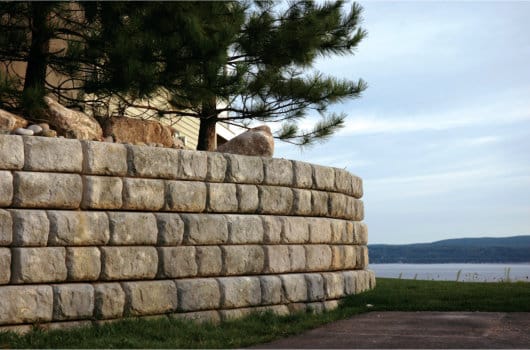
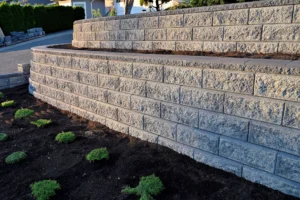
Concrete Block
There is a wide range of sizes, shapes, and styles of concrete blocks we can use to build your retaining wall. Most people think of concrete as plain and gray, but we can outfit your retaining wall with elegant, colorful concrete blocks in a variety of patterns that complement your home and landscaping features.
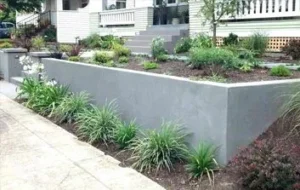
Poured Concrete
Much like the process of pouring a foundation and wall for an home addition you can pour a concrete wall for your landscaping. Poured concrete walls can be done at any height to accommodate the needs of any project. A sitting wall, structural retaining wall, planter boxes that double as walls, poured concrete walls can allow versatility to match your design.
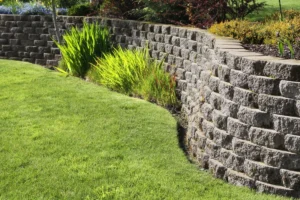
Pavers
Pavers provide another common option to build retaining walls in your yard. Our professionals have extensive expertise in paver installation for a variety of purposes, with retaining walls being among the most common. These versatile materials come in a variety of colors and sizes to fit your preferences.
